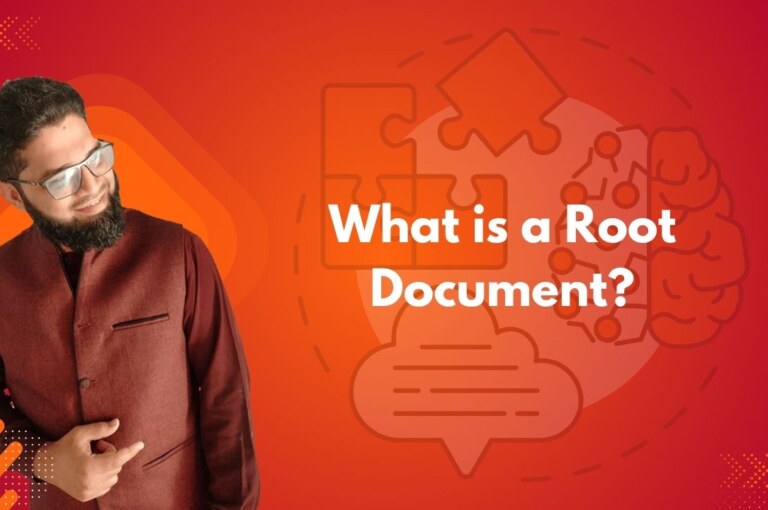A root document is the foundational page on a website that acts as the central hub for a particular topic. It’s the starting point from which users can explore related subtopics, resources, and in-depth content.
Think of it like the “main highway” with exits to detailed roads (subtopics).
Root documents are essential in structuring topical maps and supporting contextual hierarchy across a site. They also contribute to building topical authority by serving as anchor points for interlinking and thematic depth.
- Root Document: “Complete Guide to Digital Marketing Strategies”
- Subtopic Links:
- SEO Basics
- Social Media Marketing
- Email Campaigns
- Pay-Per-Click Advertising
Why Root Documents Matter in Content Strategy!
Root documents serve as the backbone of a content strategy, providing structure, clarity, and a central hub that connects all related information meaningfully.
1. Organizes Related Content
- Prevents fragmentation
- Brings structure and hierarchy
- Makes user flow logical
Related articles feel connected, not scattered.
2. Establishes a Clear Content Hierarchy
- Root = top of the pyramid
- Links to subtopics = supporting levels
- Ensures Google understands what’s central to your site
3. Boosts SEO
- Improves crawlability
- Enhances internal link equity
- Builds topical authority
4. Improves User Experience
- Central navigation point
- Guides users through your content journey
- Encourages deeper engagement, reducing bounce rate
You not only streamline user navigation but also enhance your site’s SEO performance and topical authority, by leveraging root documents.
| Industry | Root Document Title | Linked Subtopics |
|---|---|---|
| E-commerce | “Ultimate Guide to Outdoor Gear” | Tents, Backpacks, Hiking Boots, Sleeping Bags |
| Health Blog | “Healthy Living 101” | Plant-Based Diets, Fitness Routines, Mental Wellness |
| Tech Site | “AI Technology Overview” | NLP, Computer Vision, AI Ethics |
How Root Documents Support SEO!
Root documents are the cornerstone of an effective SEO strategy—they centralize your topic, organize internal linking, and establish topical authority.
Internal Linking Powerhouse
- Connects all related pages into a topic cluster
- Allows link juice to flow back and forth between supporting pages
Helps Create Topic Clusters
- Google favors clusters of content
- Root = pillar page
- Subpages = cluster pages
Centralizes Topical Authority
- The root becomes your most authoritative page on a subject
- Boosts SERP performance for all interconnected pages
Root documents help search engines understand your site structure and improve your overall search visibility, by strengthening internal links and clustering related content.
Checklist: Is Your Root Document Optimized?
- Covers the entire topic area
- Links to detailed subtopic pages
- Uses H1-H2-H3 heading structure
- Contains relevant images and visuals
- Optimized for primary and secondary keywords
- Acts as a conversion or navigation hub
Wrap Up
A root document is more than just a landing page — it’s the content headquarters for a given topic on your website. It organizes information, builds authority, improves SEO, and keeps users engaged by guiding them through related content in a structured, intuitive way.
The better your root document, the stronger your entire content ecosystem becomes.
Want to Go Deeper into SEO?
Explore more from my SEO knowledge base:
▪️ SEO & Content Marketing Hub — Learn how content builds authority and visibility
▪️ Search Engine Semantics Hub — A resource on entities, meaning, and search intent
▪️ Join My SEO Academy — Step-by-step guidance for beginners to advanced learners
Whether you’re learning, growing, or scaling, you’ll find everything you need to build real SEO skills.
Feeling stuck with your SEO strategy?
If you’re unclear on next steps, I’m offering a free one-on-one audit session to help and let’s get you moving forward.





Leave a comment